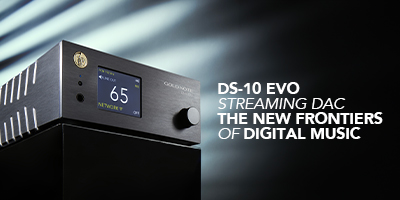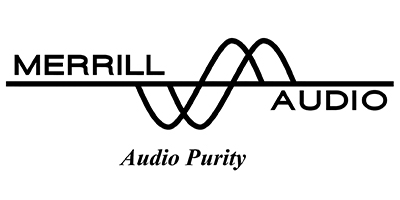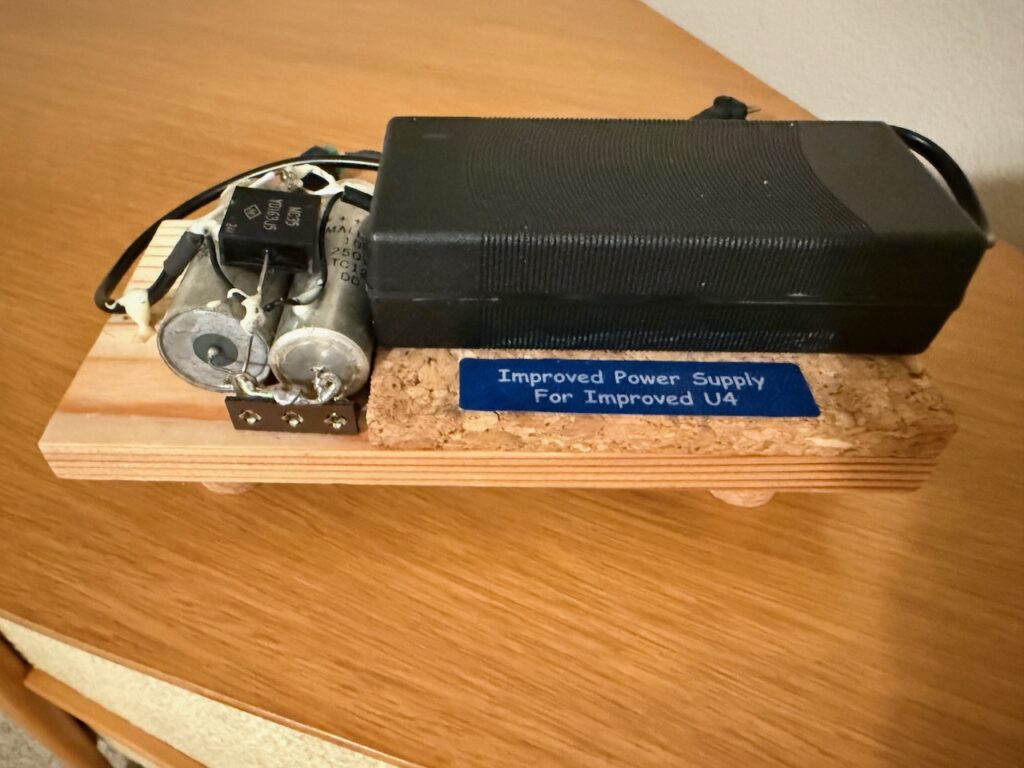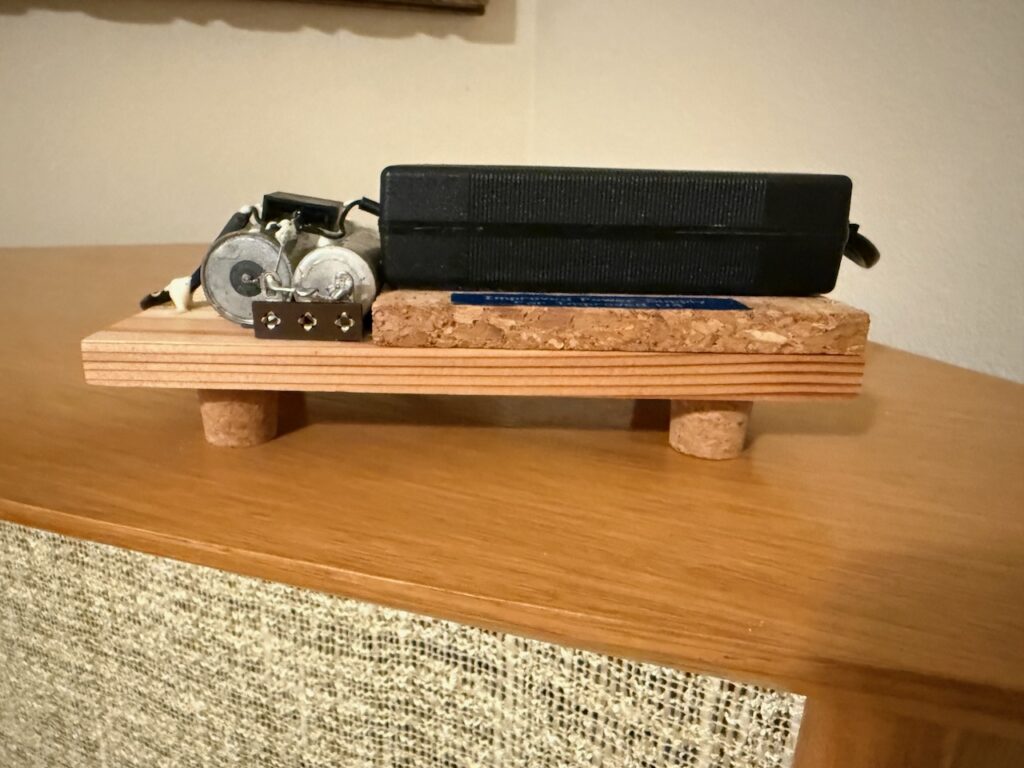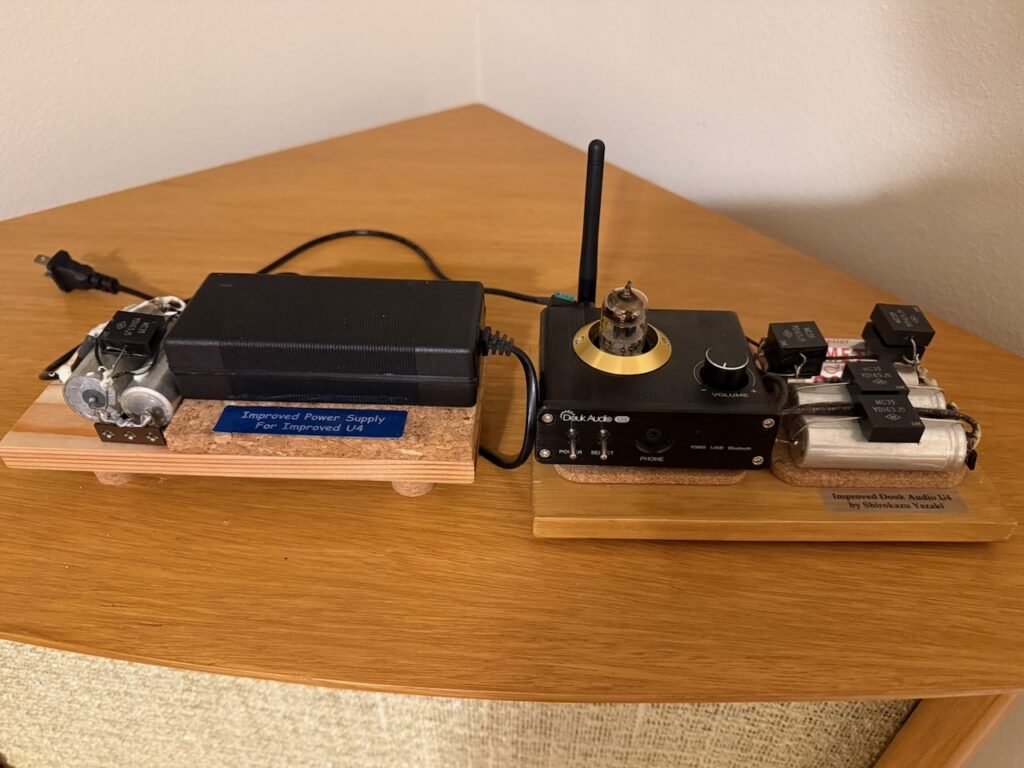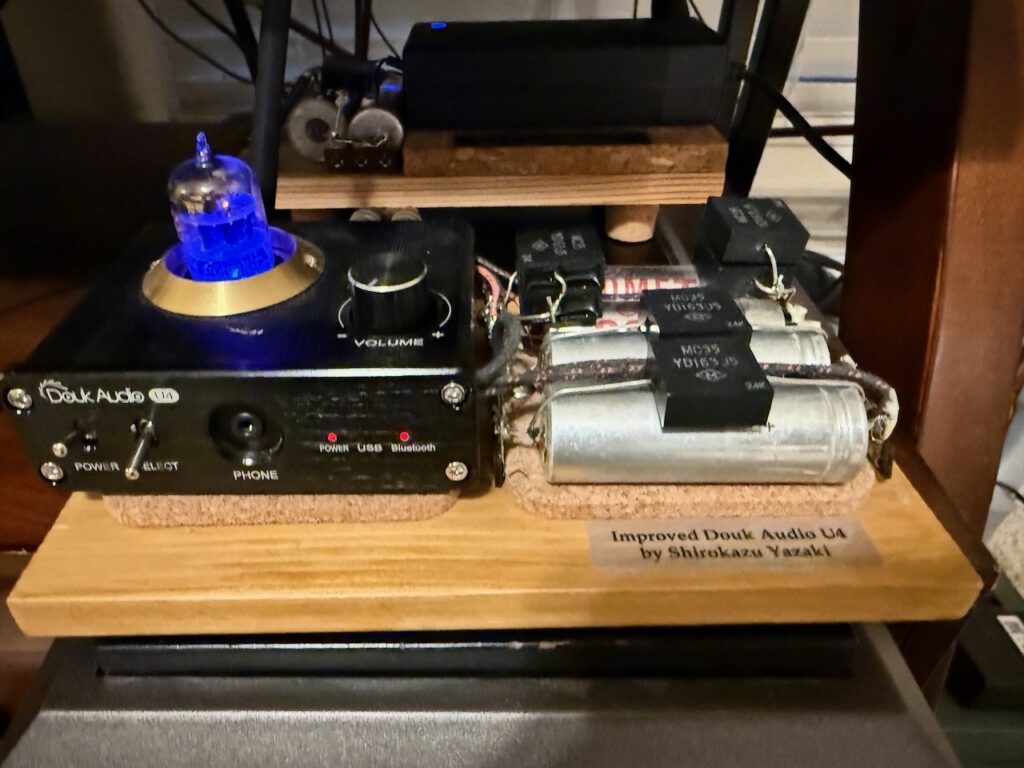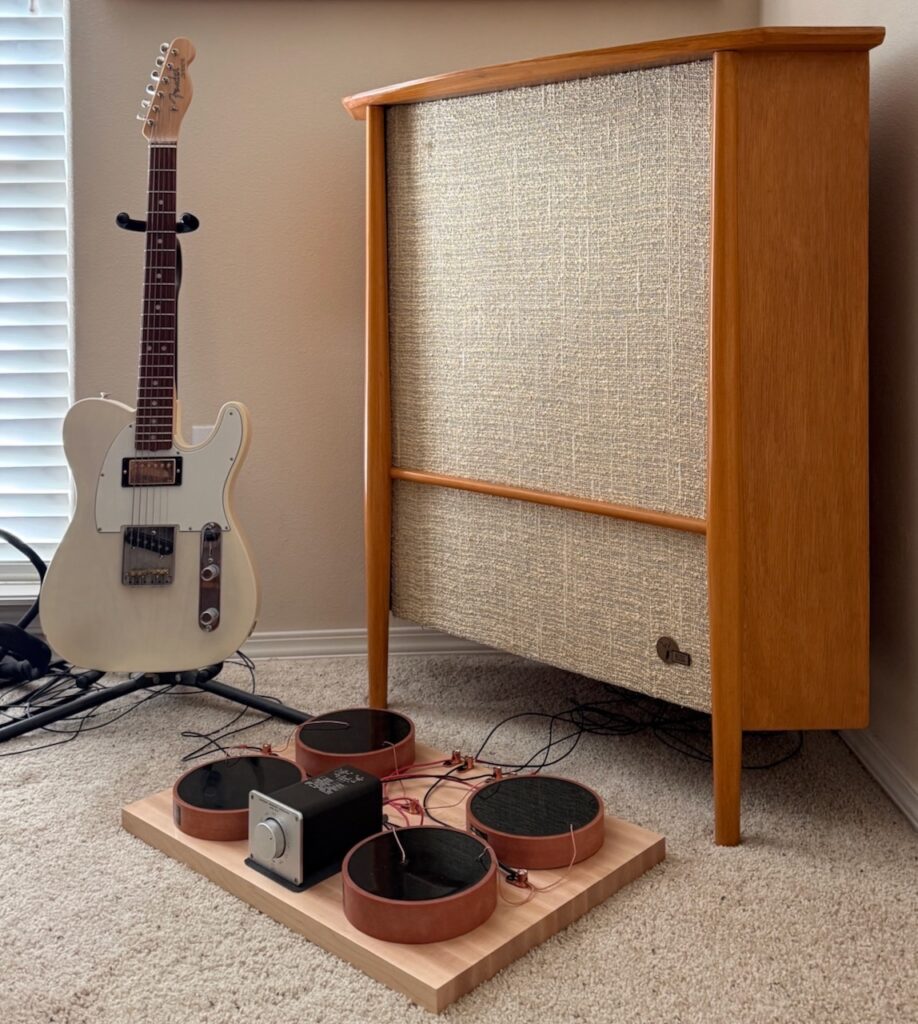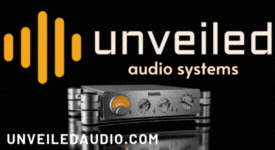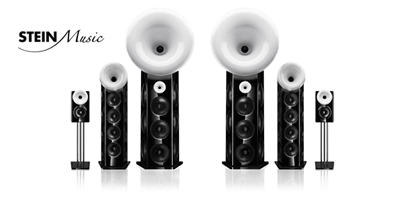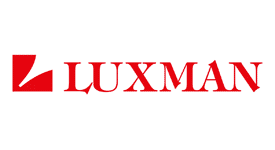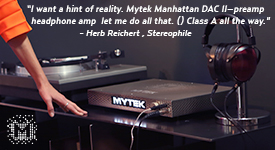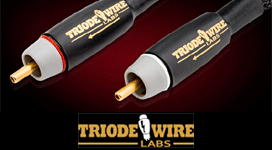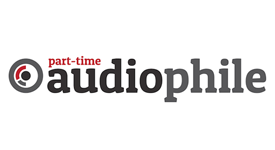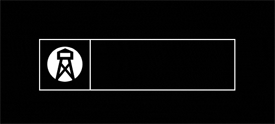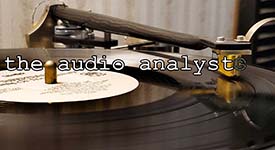If you've been following along with this story - Yazaki-san's "iPhone Adventure" - you know that it all started with Yazaki-san exploring streaming music from an iPhone to a minimalist vacuum tube Douk Audio U4 Bluetooth DAC that he had modified for higher performance.
Yazaki-san's hot-rodded Douk Audio U4.
It turned out that the performance of Yazaki-san's modified U4 was impressive, challenging the performance of CD players and DACs that were many times what a modified U4 cost.
Now Yazaki-san has focused on the power supply for the U4, and has come up with a hot-rodded power supply that has elevated the performance once again, and by a considerable amount.
Here's how the next chapter in The iPhone Adventure story came about:
I had emailed Yazaki-san telling him how excited I was about the lofty level of performance Frederik Carøe and I had achieved with our Duelund-Corona 832A Project, and wanted to thank Yazaki-san for his ideas that helped make the project such a success.
Yazaki-san told me:
"My young friend, Jun-san, returned to Japan temporarily for personal business. The three of us, including my dear friend Nishikawa, enjoyed a delicious Japanese lunch just like at our welcome party, and it was a wonderful and precious time catching up on old friendships."
Jun-san (left) with Nishikawa-san at lunch with Yazaki-san.
Jun-san (left) visiting Yazaki-san (right) in Tokyo.
"Well, during lunch, I entrusted Jun-san with a 12V power supply for the "Improved U4", named the "Improved Power Supply."
"I thought that the most efficient way would be for Jun-san to return to LA and mail it to Jeff-san from there, with some inconvenience on Jun-san's part.
"For the 12V "Improved Power Supply" I used a very simple method that significantly improves the sound quality of a conventional 12V / 5A AC adapter-based SW power supply.
"I've asked Jun-san to let it burn for a while and then send it to Jeff-san. It may take some time, but I would be very grateful if you could try it out. And I'll introduce the improvement method at a later date.
"Jun-san has been currently developing Class D devices at Infineon Technologies in LA, and the devices he developed are used in most powered speakers for PA systems today. He says that new GaN-based and SiC-based Class D devices hold great potential for new audio applications. I am one of those people who are looking forward to their development."
Wow! That was exciting finding out that Yazaki-san's hot-rodded power supply for the hot-rodded U4 was making its way to me via Jun-san.
I had emailed Yazaki-san and Jun-san and said, "I have a question for you: Does the Improved U4 decode only 44.1 kHz / 16 bit data streams, or is it capable of decoding higher sampling rates as well? I've been listening to music from the Qobuz streaming service, and it sounds very good."
After Jun-san got back home he had time to experiment with the the Improved U4 and Improved Power Supply, and told Yazaki-san and I the following:
Dear Yazaki-san, Jeff-san,
It is great to have the opportunity to try the improved U4 power supply.
Before getting into my impression on the power supply, let me share my findings on the data format of U4. In short, there is no one sampling rate and number of bits used in U4. It depends on the source and codec.
The USB DAC section supports up to 48kHz 16 bit. The Bluetooth section is likely operating at 44.1kHz or 48kHz while the DAC section is capable up to 32 bit 328kHz.
When I tore down the U4, I found that the unit I have does not use the chip set as advertised. It has ATS2825 for Bluetooth, PCM2704 for USB. There is no external NOS DAC as advertised but it used built-in DAC in each chip.
This means that USB-DAC mode uses 48kHz or 44.1kHz 16 bit format whichever the PC is sending. The format in Bluetooth mode can vary depending on the codec used. In my case with streaming using iPhone Bluetooth as a source, it probably uses 48kHz 24 bit by the Apple’s Bluetooth codec. (Using wired external DAC allows full 24 bit 196kHz from iPhone.)
Back to the U4 power supply, I test it with a modified class D amplifier and the JBL 4320 studio monitor.
I noticed the positive difference with it right at the beginning. Compared with the stock AC adaptor, Yazaki-san’s power supply brings move juice, opens wider flat frequency energy with more details. Let me season it a little more before sending it to Jeff-san.
It is getting colder here in So-Cal too. Please stay warm listening music and don’t catch a cold.
Sincerely,
Jun
Yazaki-sans Improved Power Supply for the Improved U4.
Yesterday the Improved Power Supply arrived from Jun-san. A big "Thank you!" to Jun-san and Yazaki-san for sending me the Improved Power Supply to listen to - you're the best!
Yazaki-san did such a nice job of building the Improved Power Supply and placing it on a plinth. I couldn't wait to try it with the Improved U4 in my Duelund-Corona 832A Project loudspeakers based audio system.
Here's what Yazaki-san told me about the hot-rodded power supply:
"Jeff-san,
"I'd like to introduce you to the "Improved Power Supply." Although I called it an "Improved Power Supply," that may be a bit of an exaggeration.
"The 12V/5A AC adapter (Switching Power Supply), I initially sent to Jeff-san supplied
sufficient power for not only for driving your Improved U4, but also it could produce fairly
enjoyable sound quality, I suppose. I also personally thought the sound quality of this
AC adapter was an acceptable level. But one day, I had the idea that the sound quality of
this AC adapter might be improved.
"This is because a rectifying capacitor is always connected in parallel at the final stage of a
switching power supply and this capacitor should be able to sequentially supply the current to
the load in response to particularly minute load fluctuations.
"In fact, this AC adapter had two 680 MFD / 25V electrolytic capacitors connected in parallel at the final stage. In other words, it's fair to think of the 1,360 MFD of capacitance as rectification and a buffer against minute load fluctuations.
"This led me to the idea that I could apply the techniques I've used to improve the sound quality of my tube amplifiers.
"In other words, I assumed that the capacitor response characteristic improvement technology that has proven so effective in the plate power supplies, the decoupling, and the cathode bypass capacitors of my tube amplifiers could also be effectively applied to this AC adapter power.
"As for the specific methodology used in this study, by paralleling a Mallory 100 MFD / 250 V electrolytic capacitor, one of the highest-performance electrolytic capacitors of all time and a West Cap 0.47 MFD /600 VDC (the predecessor of the Arizona Cap) in the final stage (1,360 MFD), for significantly reducing E.S.R. across the entire audible range.
"Furthermore, by paralleling an Ultimate Ruby Mica 0.016 MFD / 500 VDC, it would be possible to eliminate the switching noise by flowing it into return the ground of the power supply.
"What is most surprising is that both Mallory and West Cap are highly reliable components that meet military standards from half a century ago.
"I only hope you enjoy this "Improved Power Supply.""
I quickly went to work and installed the Improved U4 with the Improved Power Supply into my Altec Corona 8332A loudspeakers based audio system.
The first thing I did was stream Jim Hall’s Concierto from my iPhone via Qobuz to the Improved U4 with the Improved Power Supply through the Altec Corona 832A loudspeakers with their Duelund CAST crossovers.
I used the beautiful little Leben CS-300F vacuum tube integrated amplifier to power the system, which is an amplification match made in heaven for my Coronas.
All cabling was tinned-copper - either Duelund 16GA or vintage Western Electric 16GA - and I used the Belden 8402 tinned-copper microphone cables as interconnects exclusively in this system. Power cords were a mixture of Sablon Audio and Acoustic Revive.
The sound quality streaming Jim Hall’s Concierto from my iPhone via Qobuz to the Improved U4 with the Improved Power Supply was truly exceptional. If I was blindfolded, and you had told me I was listening to a master tape via reel-to-reel, I would have believed it. Absolutely gorgeous.
The tonal balance was very natural sounding, liquid, with a huge ambience from the recording filling my room completely. Lots of resolution of fine detail and musical nuance, with timbral realism fully intact.
The musical images and soundstage projected out into my room from my room boundary positioned loudspeakers a good 6 or 7 feet, and spanned the distance wall-to-wall, a good 14.5 feet or so.
The musical images had a vivid and solid flesh & blood presence, and the music was alive with meaning and color. It really felt like I was sitting in with the guys on stage. I am really impressed.
I'm just getting started listening, so I have more listening impressions to come, so stay tuned!
Previous Articles in The iPhone Adventure Series of Articles
A New & Exciting Audio Adventure from Yazaki-san: The iPhone Adventure! HERE
Today's Fresh Catch: iPhone Adventure with the Improved U4 by Yazaki-san! HERE
Listening: My iPhone Adventure with Yazaki-san's Improved U4! Part 1. HERE
Jeff Checking In: Acoustic Revive, Audio Note (UK), Duelund, iPhone Adventure, Spatial Audio Lab, and music! HERE
Jeff Checking In: Acoustic Revive, Audio Note (UK), iPhone Adventure, audio centrism or audio relativism (?), and other stuff! HERE
Jeff Checking In: PAF 2024, Audio Note (UK) M6 RIAA, Yazaki-san's iPhone Adventure, music, and other stuff! HERE
Ok, that's all for now. Check back in later, I'm writing up some fun surprises for you to read.
As always, thanks for stopping by, and may the tone be with you!

